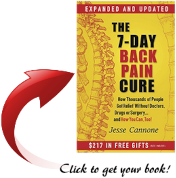Rolfing, also known as Structural Integration, is a form of bodywork that focuses on manipulating and reorganizing the connective tissues (i.e., the fascia) in our body. Dr. Ida P. Rolf, a biochemist, developed this approach in the mid-20th century. And thus, the name “Rolfing”. The primary goal of Rolfing is to bring the body into better alignment and balance by working with the fascia. Before we continue, I want to be clear to you that I am not a medical professional, and what follows is not medical advice. I hope the following information triggers your curiosity to do your own research and do a deeper dive on this topic.

Image by gstudioimagen1 on Freepik
Here are some key aspects of Rolfing and its potential benefits:
- Fascia and Structural Integration:
- Fascia: As discussed in previous articles, this is the connective tissue that surrounds muscles, bones, and organs. It plays a crucial role in maintaining the body’s structural integrity and providing support.
- Rolfing’s Approach: Rolfing practitioners believe that imbalances or restrictions in the fascia can lead to discomfort, pain, and limitations in movement. By manipulating and realigning the fascia, Rolfing aims to improve overall body structure and function.
- Benefits of Rolfing:
- Pain Relief: Rolfing is often sought for its potential to alleviate chronic pain, especially in the back, neck, and shoulders. By addressing imbalances in the body, it may help reduce strain and tension that contribute to pain.
- Improved Posture and Flexibility: Rolfing seeks to enhance body awareness and improve posture. Clients often report feeling more balanced and flexible after a series of Rolfing sessions.
- Enhanced Movement Patterns: Rolfing can assist individuals in developing more efficient, smoother and fluid movement patterns. This can be beneficial for athletes and those looking to enhance their overall physical performance.
- Rolfing Sessions:
- Rolfing is typically delivered in a series of sessions, each focusing on different areas of the body. The sessions are designed to systematically address and balance the entire body.
- During a session, the practitioner uses hands-on techniques, such as deep tissue massage, myofascial release, and movement education, to manipulate the fascia and encourage improved alignment.
- Individual Experiences:
- Responses to Rolfing can vary among individuals. Some people may experience immediate relief, while others may notice gradual changes over the course of the sessions.
- It is essential to communicate openly with the Rolfing practitioner about any discomfort or sensations experienced during the sessions.
- Scientific Research:
- While some anecdotal evidence supports the benefits of Rolfing, scientific research on its effectiveness is limited. More studies are needed to establish its efficacy and mechanisms of action.

Before undergoing Rolfing or any other form of bodywork, it is advisable to consult with a healthcare professional, especially if you have any existing medical conditions or concerns. Additionally, choose a certified and experienced Rolfing practitioner for optimal results.
To your Success & Freedom,
Glenn Shimabukuro



